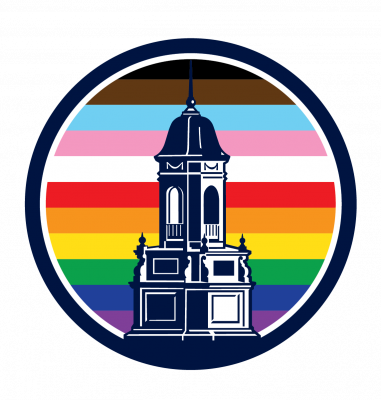“You SHOULD…Look at the “Grand Panorama of a Whaling Voyage ‘Round the World” from the New Bedford Whaling Museum
With the omnipresence of digital culture, we often tend to think of our society as a predominately visual culture. The 1848 “Grand Panorama of a Whaling Voyage ‘Round the World,” a 1,275-foot-long painting performed as a giant moving scroll, reminds us that visual communication did not begin with the advent of projected photographic images in the late 19th century.
You can experience the entirety of this recently restored work online, at https://vimeo.com/36824966. Now part of the collections of the New Bedford Whaling Museum in Massachusetts, this work by Benjamin Russell and Caleb Purrington was performed across the United States in the latter half of the 19th century, part of a burgeoning and popular culture of panorama performance. The moving panorama is an aspect of global traditions of painting and performance with antecedents in Chinese, Indian, Javanese, Persian, and various European cultures. This dynamic, spirited means of telling the important stories of a community–religious, political, social, historical, personal–combines a succession of images with texts and music, allowing audiences to be reached by a multi-media experience.
Herman Melville, the author of Moby Dick, was said to have seen this panorama before he wrote his classic novel about whaling and American life. Like Melville’s book, the New Bedford panorama shows us an epic voyage on a whaling ship from New Bedford south to Cape Horn, and then into the whaling fields of the Pacific. Like Melville’s novel, the panorama is much more than an examination of a profitable extractive industry, showing us as well how Americans viewed the world, other peoples (in Latin America, the Pacific, and along the Northwest coast of North America), and how the United States might be beginning to think of its economic and political role in the modern world.
The “Whaling Voyage ‘Round the World” can give us a direct sense of what 19th-century Americans experienced when they attended one of the most popular performance forms of the time.”
-Dr. John Bell
Director, Ballard Institute and Museum of Puppetry
Associate Professor, Dramatic Arts Department

 “‘What you should read, see, and hear?’ You should read The Making of Black Lives Matter: A Brief History of an Idea (Oxford University Press, 2017) by political theorist, Christopher J. Lebron, because he reminds us that the philosophical underpinnings of the #BlackLivesMatter movement predate the contemporary movement. Analyzing the treatment of “Black” people over time, Lebron submits a historical framing of Black political thinkers’, activists,’ and letterpersons’ understandings about Black people’s rights (and the lack, thereof) in American society. This treatment, Lebron notes, prompted Black Americans’ rhetorical, oratorical, lettered, and physical activism to articulate and assert Black people’s equal humanity, rights, and protection in different eras of American political history. Thus, Lebron outlines the tradition of Black resistance oriented in the long-standing Black freedom struggle to contest racial discrimination and systemic inequality in various forms (in addition to contemporary struggles against police brutality). Lebron elucidates this longitudinal activism by examining political thought and expressions of Black men and women, such as Frederick Douglass, Ida B. Wells, Audre Lorde, Anna Julia Cooper, Langston Hughes, James Baldwin, and Dr. Martin Luther King, Jr., who establish foundational arguments about Black Americans’ humanity, (in)justice, and liberation for various iterations of “Black,” intersectional identities (class, gender, sexuality, and ethnicity, for example).”
“‘What you should read, see, and hear?’ You should read The Making of Black Lives Matter: A Brief History of an Idea (Oxford University Press, 2017) by political theorist, Christopher J. Lebron, because he reminds us that the philosophical underpinnings of the #BlackLivesMatter movement predate the contemporary movement. Analyzing the treatment of “Black” people over time, Lebron submits a historical framing of Black political thinkers’, activists,’ and letterpersons’ understandings about Black people’s rights (and the lack, thereof) in American society. This treatment, Lebron notes, prompted Black Americans’ rhetorical, oratorical, lettered, and physical activism to articulate and assert Black people’s equal humanity, rights, and protection in different eras of American political history. Thus, Lebron outlines the tradition of Black resistance oriented in the long-standing Black freedom struggle to contest racial discrimination and systemic inequality in various forms (in addition to contemporary struggles against police brutality). Lebron elucidates this longitudinal activism by examining political thought and expressions of Black men and women, such as Frederick Douglass, Ida B. Wells, Audre Lorde, Anna Julia Cooper, Langston Hughes, James Baldwin, and Dr. Martin Luther King, Jr., who establish foundational arguments about Black Americans’ humanity, (in)justice, and liberation for various iterations of “Black,” intersectional identities (class, gender, sexuality, and ethnicity, for example).”









